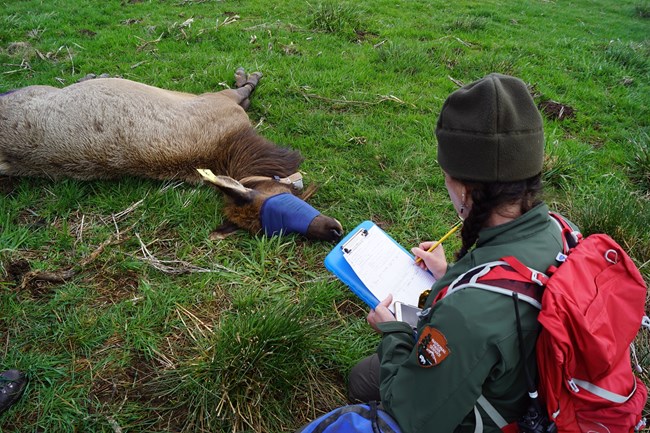
Elk on the Clatsop PlainsRoosvelt Elk (Cervus elaphus roosevelti) are quintessential to the Pacific Northwest and have cultural, historical and ecological significance within the Clatsop Plains. The heavy overlap of herd ranges with modern day developed area causes significant conflicts of concern. Beginning in 2008, Lewis and Clark National Historical Park and partners implemented a monitoring plan that gathers data on Clatsop Plains elk herds in and around lands owned by the National Park Service. These data are integral for sound understanding of local elk ecology and have direct implications on management decisions aiming for a balanced preservation of elk and human interests. 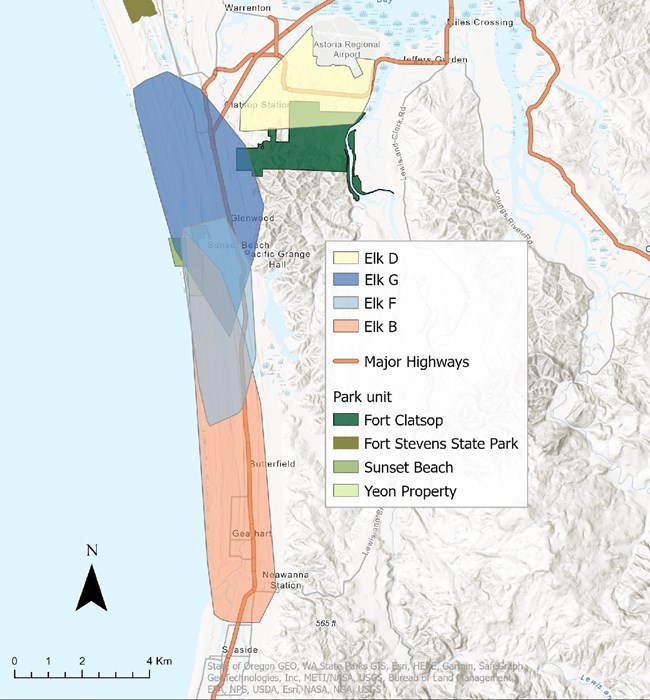
NPS graphic Elk CollaringThe first six collars were configured to record locations on a 13-hour fixed interval throughout the year and a seven-hour interval during calving season. From 2019 – 2022, the park had six collars deployed over eight periods to provide range information for a total of seven individual elk. Estimated home ranges of the representative individuals were developed from the resulting data. While this does give us insight into general assumptions about elk home ranges and herd fidelity, it must be emphasized that this data represents a very small subset of individuals and there may be more variation that we did not capture. 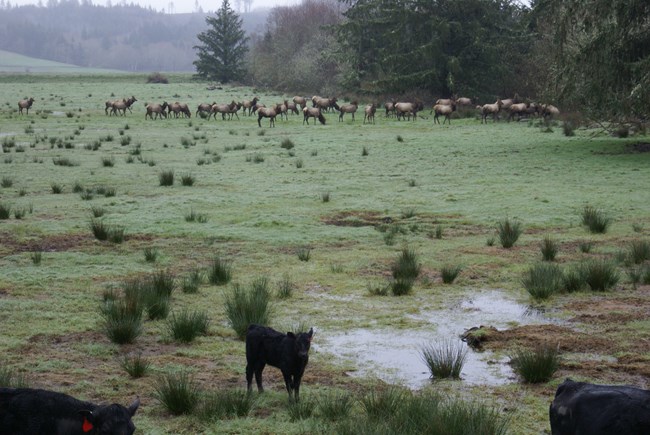
NPS photo Elk Driving SurveysDriving surveys are designed to understand the relative visitor viewing opportunities from roadways that surround the Fort Clatsop unit; they are not intended as a means for population estimates. The graphic below shows the average herd group size for even months 2009 – 2021. Of the relative viewing opportunities in this data set, the median group size was around 10-20 elk and the maximum number observed in one group was 95 in 2018. Based on this preliminary data exploration, there appears to be no clear patterns of increase or decrease in viewing opportunities across time. 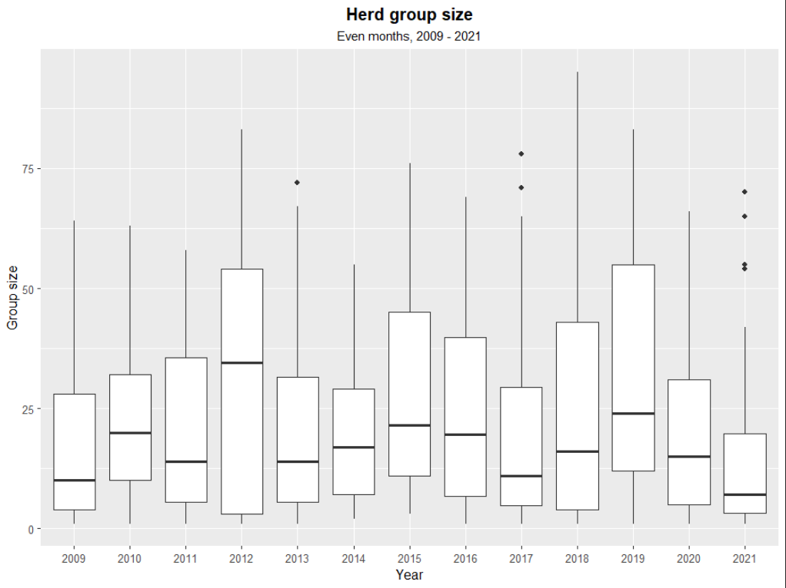
Elk Pellet MonitoringTwice a year, once in the fall and subsequently in the late winter, trained park staff and volunteers survey approximately 62 established plots within the 1,000-acre Fort Clatsop unit looking for elk pellets and recording information such as decay class of the pellets,and habitat attributes. This monitoring effort quantifies trends in relative elk use in the winter and proportion of area occupied by elk. The 2014 synthesis reported a slight decline in modelled proportion of area occupied by elk (2008 – 2012). Raw results (with no correction or modeling) as of 2021 indicate a distinct decline in area occupied by elk in the proportion of points with observed pellets.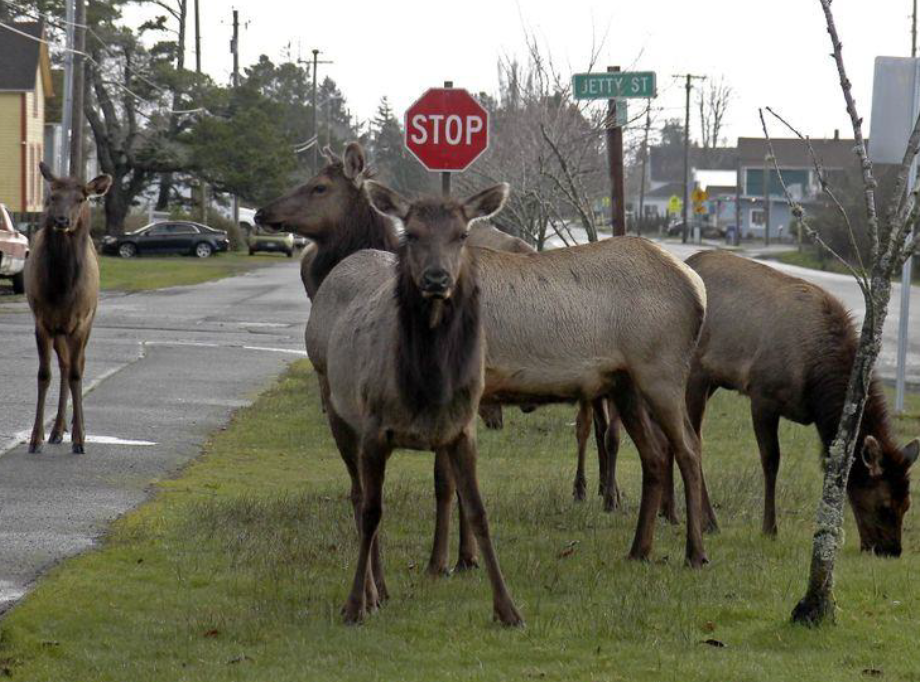
Clatsop Plains Elk Collaborative, an Oregon Solutions projectIn 2019, the Oregon governor designated the Clatsop Plains Elk Collaborative as an Oregon Solutions project, with the goal to reduce conflict between elk-human interactions, increase safety, and promote cohabitation. Lewis and Clark National Historical Park serves on the project team, providing data and educational resources. The park continues its established elk monitoring program and seeks funding for continuing analysis and collecting more detailed data for elk movement to share with the community. Clatsop Plains Elk Collaborative – Oregon Solutions (orsolutions.org)Elk Etiquette
|
Last updated: January 19, 2024
